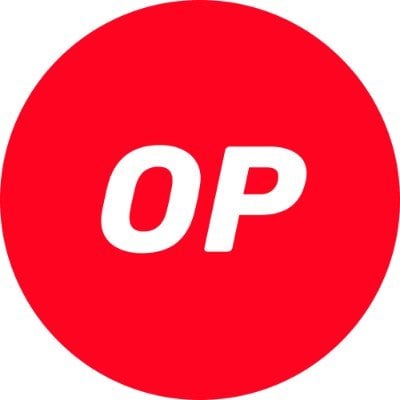zkSync quietly earned over 20 million dollars in six months. How does Layer 2 make a profit?
Author: Day, Plain Blockchain
This year, Ethereum Layer 2 has experienced explosive growth, similar to the previous boom of public chains, with numerous projects starting to lay out their strategies in the Layer 2 space, regardless of whether they have solid foundations. Recently, some opinions suggest that due to the expectations of Token distribution in Layer 2, many studios have become targets for exploitation, with Token distribution and transaction fees allowing Layer 2 project teams to become the biggest winners in this game of profit extraction.
According to analysis by The Block, based on current daily profits, Coinbase could earn $61 million annually from the Base network, outpacing many public chain platforms or DAPP applications in the industry. Today, let's take a brief look at how Layer 2 project teams actually make profits (referring to Rollup-type solutions).
1. How Layer 2 Makes Profits
Layer 2 refers to scaling technologies and protocols built on top of the underlying blockchain, aimed at improving the scalability, performance, and transaction throughput of the blockchain. Traditional blockchains (like Ethereum) have some limitations, such as high transaction fees, low throughput, and longer confirmation times. Layer 2 typically introduces new protocols and mechanisms on top of the blockchain, allowing a large number of transactions to be processed in auxiliary networks before leaving the main blockchain. The results of these transactions are aggregated and submitted to the main blockchain, thereby reducing the burden on the main blockchain, achieving higher throughput, lower costs, and faster confirmation speeds while maintaining security and interoperability with the main blockchain.
As a currently popular track, many people have high hopes for Layer 2. In the current bear market environment, can one still make money with Layer 2? How exactly is this achieved?
(1) Transaction Fees
Layer 2 platforms can achieve profitability by charging users transaction fees. When users conduct transactions on Layer 2, they need to pay certain fees, which can flow directly or indirectly to the maintainers or node operators of the Layer 2 platform. The platform can set different fee structures, such as a fee model based on the number or value of transactions, to generate revenue.
Let's first take a look at the composition of Layer 2 transaction fees:
Computation Fees: The fees required for executing smart contracts or computational operations on Layer 2. This includes executing contract code, computing state transitions, and other operations.
Storage Fees: Layer 2 involves storing user data, in which case users need to pay storage fees to cover the costs of data storage and management. Storage fees may vary based on the amount of data stored, the duration of storage, and the complexity of the data.
Main Chain Transaction Fees: The fees for submitting transaction results from the Rollup chain to the main chain. This includes the costs of submitting aggregated transaction or state update hash values and other information to the main chain for verification and storage. A small number of transactions also need to be conducted on the main chain to support the operation and security of the Rollup chain, which may involve operations such as opening, closing, and updating the state of the Rollup chain, thus incurring fees related to main chain transactions.
Profit for the project team = Layer 2 gas - data computation and storage fees - Layer 1 verification fees.
This is just a rough calculation; some costs related to transaction hardware facilities, node operation and maintenance, and labor costs are not included.
(2) MEV
Layer 2 separates transaction validation and Sequencer (transaction ordering submission) into two parts, and currently, the vast majority of Layer 2 Sequencers are centralized, mostly controlled by the project teams. For example, Base has Coinbase as its only Sequencer, which is why Coinbase can capture all the gas profits from Base. Due to the centralization of Sequencers, a portion of MEV (Maximum Extractable Value) is also earned by Layer 2 project teams.
(3) Developer Tools and Services
Layer 2 platforms provide various developer tools and services to facilitate and support developers. These tools and services may include software development kits (SDKs), smart contract templates, cross-chain bridges, etc. The platform can generate revenue by charging developers licensing fees, usage fees, or subscription fees for premium features.
For example, OP Stack, as revealed by Twitter KOL w3tester, charges each project team entering OP Stack 30% of their revenue, and using one-click chain deployment would be even more expensive. This also means that if not managed properly, and if sufficient transaction volume cannot be guaranteed, one-click Layer 2 deployment could lead to losses.
(4) Ecosystem Benefits
The success of Layer 2 platforms is closely related to the prosperity of their ecosystems. If the platform can attract more users and projects to join and provide better scalability and user experience, this will help increase the overall value of the ecosystem. The platform can benefit from the appreciation of the ecosystem through Token holdings, equity, or other means. Additionally, the prosperity of the ecosystem will bring a lot of popularity and activity to Layer 2, allowing it to earn revenue from gas fees.
(5) Token Economic Model
Layer 2 platforms issue their own Tokens, and Token holders can earn profits by participating in platform governance, staking Tokens, or enjoying other rights. Layer 2 platforms can raise funds through equity or Token sales. If the market surges, and the related track explodes, the appreciation of Tokens will also bring considerable profits to Layer 2 project teams.
The above are the main profit models for Layer 2 project teams.
Current On-Chain Profit Situation of Leading Layer 2s

On-chain profit statements of leading Layer 2s
Let's take a brief look at the on-chain profit situation of various leading Layer 2s in August, where the profit mainly refers to the extraction of fees. L2 revenue = L2 fees - L1 data storage fees - L1 verification costs, which can only be considered an approximation, as the off-chain resource consumption and operational costs of Layer 2 are not calculated:
zkSync
Around $3.4 million. It can be seen that since zkSync went live, its profitability has consistently been at the forefront. If other project teams conduct airdrop distributions, zkSync's revenue will also see a surge. As of the mainnet launch, over the past six months, it has made a total profit of about $23.5 million. It is certain that most of zkSync's revenue comes from profit-extracting parties. When this figure was calculated, it was truly surprising to see that even in such a poor market this year, it could quietly earn so much money, supported by top institutions and leading the track, making profit quite easy.
BASE
Around $2.1 million. BASE just launched at the end of last month, and the massive traffic from the Coinbase platform, combined with the short-term explosion of the meme project BALD, brought a lot of traffic to BASE. Although the BALD project ultimately rug pulled, it still left a large number of users for BASE. Additionally, the recent strong rise of the social application Friend has continuously brought popularity to BASE, and in less than two weeks, Friend has already achieved a total locked value (TVL) of $6 million, generating $3 million in revenue and attracting over 100,000 users.
Arbitrum
Around $930,000. Arbitrum's recent popularity has declined. In March and April, when the Arbitrum Token was just launched, the on-chain ecosystem saw a surge due to the outstanding performance of projects like GMX, RDNT, and GNS, leading to increased activity at that time.
Optimism
Around $800,000. The Optimism ecosystem has been in a relatively lukewarm state. The rise of the Arbitrum ecosystem in March and April brought some attention from on-chain players to Optimism, which is also in the OP track. Recently, due to projects like Coinbase, BNB Chain, and Worldcoin choosing to launch chains based on OP stack, the Optimism ecosystem has also benefited, leading to a slight increase in on-chain activity.
The Layer 2 revenues mentioned above mainly come from gas fees. The more users there are, the more revenue there is. When ecosystem projects have breakout hits or potential positive news, the projects earn more.
3. Conclusion
In any case, every track has its profits and losses. It is relatively easier during a boom, but to earn more, one must become a leader to have a chance. The vast majority of projects are merely participants, and profits will always belong to a minority.
Overall, for Layer 2 to develop better, it needs to capture a larger market share, and at the same time, breakout projects in the ecosystem must emerge to bring activity.













